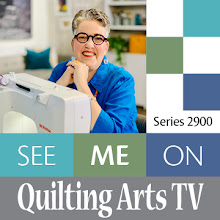This cyber game of tag is a great way for all of us who blog (or just read blogs) to connect in a new way. Once you are tagged, you are supposed to post seven things about yourself, and tag seven other blogs.
So, here goes...
Seven things you might not know about me:
1. I am also a graphic designer, and design corporate newsletters, logos and such under my other company, Black Cat Graphics.

2. The black cat is my personal symbol, since I was born on Halloween. I have had several black cats in my life. The current black cat – well, mostly black... she has been licking her fur off lately and is rather splotchy – is named Trouble.

I also have a dog, Sophie, and another cat, Max, who is a real character and likes to pose for the camera. Max is shown below riding the vacuum cleaner. Yes, really.

3. I have a compound mitre saw and I'm not afraid to use it. Since my husband and I purchased our 1916 home about 11 years ago, I've discovered that I love to renovate. (When I'm not absorbed in a quilting project, that is.) Here's my house, all decked out for Halloween:

4. I was born in Pittsburgh, PA, and have lived in 7 states (Pennsylvania, Indiana, New York, New Jersey, North Carolina, Kentucky and Virginia) and one foreign country (Scotland, where I spent my junior year of college at the University of St. Andrews).
5. I have an affinity with trees. One of my biggest pet peeves is ignorant people who top their trees. (Topping is improperly pruning a tree by crudely chopping off the end of the branches. It is ugly and it promotes insect damage and disease.) I wish our trees today could be like those in Tolkien's Lord of the Rings books, and come to life to punish the bad guys ... I'd pay good money to see the trees take a chain saw to the evil tree company men who top them!
Here’s a view of the maple tree outside my bedroom window on a rare snowy morning:

5. I love the Dave Matthews Band (my husband and I have seen them nine times so far). I love the music, and I love the message (enjoy life and all its gifts, live in peace).

6. My mom is also a quilter, and she is my biggest fan. When she and my dad gave me a new sewing machine for my fortieth birthday a few years ago, it changed my quilts and my life. (Thanks, Mom and Dad!) It is so wonderful to be able to share a hobby with your mom. Here's a photo of my mother as a baby, with her mother, Dorothy (who was a wonderful seamstress and also made quilts!)


7. My quilt “The Bluest Eye” is now hanging at Barack Obama's Ohio headquarters. I met a fascinating woman and art quilt collector, Michele Hardman, at the 2007 SAQA conference, and she asked if she could exhbit the quilt at Obama's headquarters in Chicago, where she works. She hung the quilt in Ohio about a month ago when she helped open Obama's Ohio headquarters in Columbus. I love Obama’s optimism, eloquence and energy.

Seven great bloggers you should know:
1. Sarah Ann Smith is a wonderful art quilter from Camden, Maine, who will be teaching at the AQS show in Paducah this spring. Her art will also grace the cover of the book Quilting with Beads, to be released in May or June 2008.
2. Melinda Schwakhofer is an American fiber artist living in England. Some of her blog is about cooking, some about quilting, and some about her life in the English countryside. I enjoy her beautiful photos of England, and her thoughtful musings on a wide variety of subjects.
3. Grace Howes is a good friend who started out as a quilter but is now a full-fledged fiber artist. She grew up in the Bahamas, has a wonderfully hearty laugh and an upbeat attitude that is infectious.
4. Ellen Guerrant is a wonderful, warm, deep-thinking fiber artist who lives in the Charlotte area. I enjoy reading her thoughts on art and many other subjects on her blog.
5. You may already recognize Lyric Kinard from her wonderful series of articles in Quilting Arts magazine. Lyric lives in North Carolina, and I met her at the regional SAQA conference in October 2007. She is teaching several classes at this year's International Quilt Festival in Houston.
6. Janine Matthews is a fiber artist, quilt teacher and designer from New South Wales, Australia. She makes beautiful jewelry, too. I met her online through the QuiltArt listserve. I enjoy her blog because it has a big personality (like her!) and because it gives me a little taste of Australia each time I visit.
7. Melanie Testa is a cutting-edge fiber artist whose work I love. You may have read her articles in Quilting Arts magazine (the latest is on soy wax layered with monoprinting), or for her widely exhibited work. She is writing a book about all the processes she uses in her art.

























































